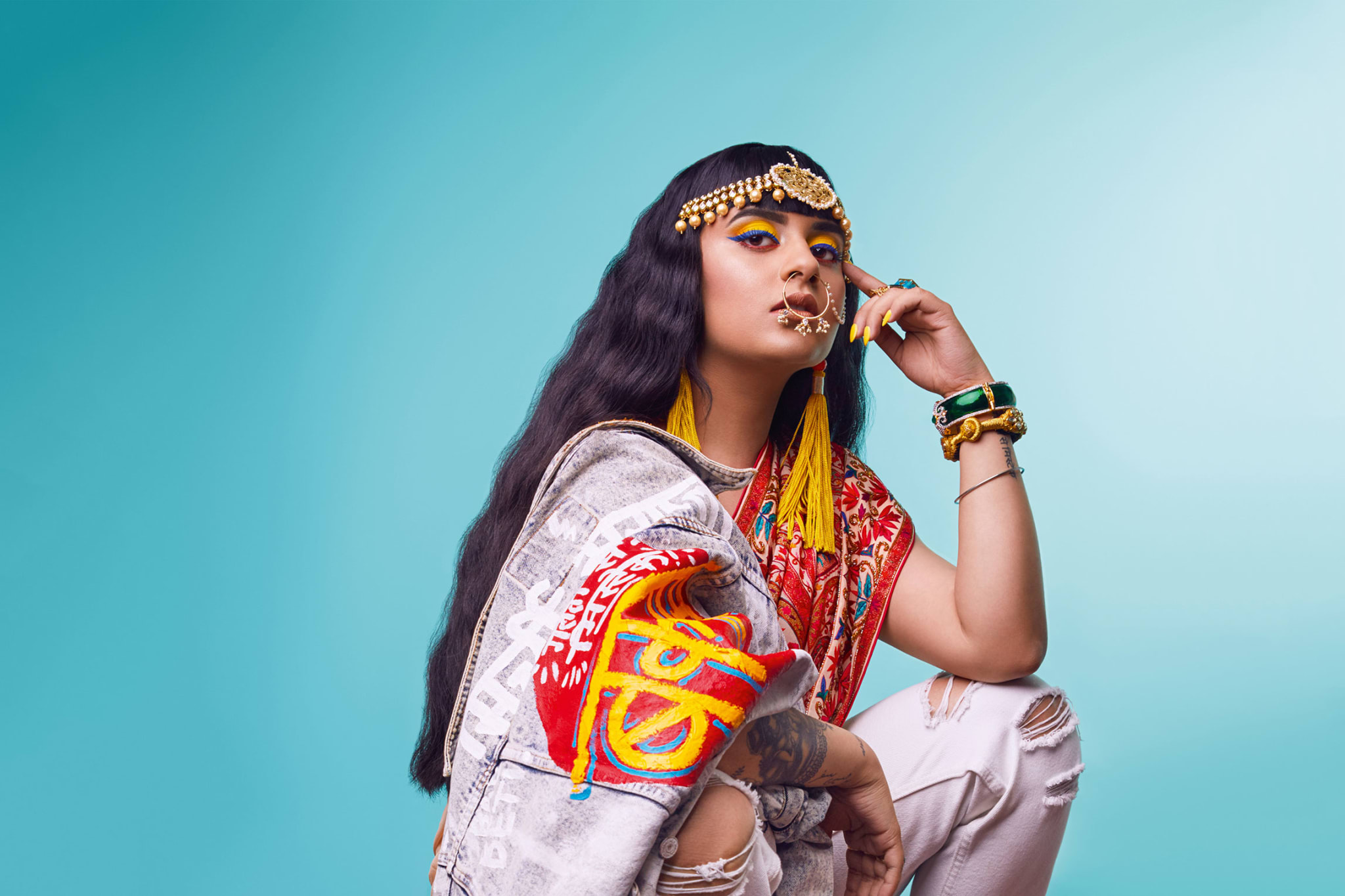
Culture & Style
In conversation with Babbu The Painter
At 8am on a spring February morning in Mumbai, Toronto-raised artist Babneet Lakhesar is working on a mural on the facade of Soho House Mumbai, which sits facing Juhu Beach. Also known as Babbu The Painter, her design is inspired by the demon king of Lanka, Ravana, a key character in the Hindu mythological epic, Ramayana. In the new work, Lakhesar has taken inspiration from Ravana’s 10 heads, marrying it with her signature characterisation of the moods of Indian women. ‘I’m drawn to atypical characters,’ says Lakhesar. ‘While most consider Ravana evil, there are other facets to his personality, too – he’s still worshipped in South India. He was a Lord Shiva devotee and a scholar. People are complex; you have to scratch beyond the surface.’
Perception, prejudice, identities and their interpretation are themes that have been incorporated into Babbu The Painter’s art since the beginning. While her rendering of Ravana might be cheeky and Instagram-friendly, it draws heavily from her firsthand experiences of growing up as an Indian immigrant in Canada (she moved there at the age of six) and her journey of self-discovery and introspection. ‘Everyone headlines me as an Indian, brown, female painter,’ says Lakhesar. ‘But I’m just an artist.’
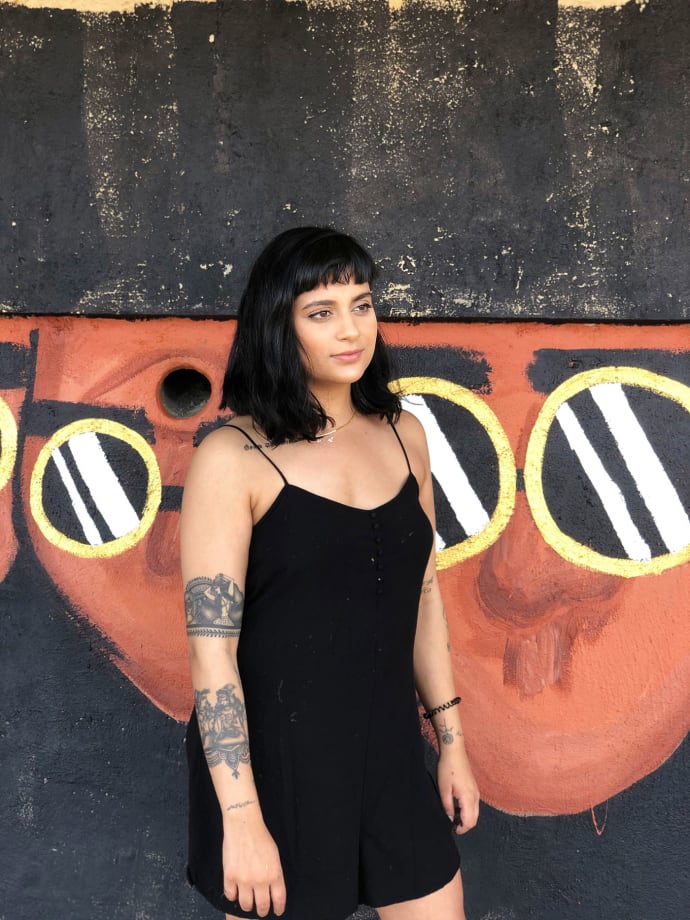
The birth of Babbu The Painter
The fine arts and sculpting major from OCAD University in Toronto frequented underground hip-hop and R&B parties in the city as a student. But not wanting to lose her Indian identity as she immersed herself in this subculture, she started printing old Bollywood posters on T-shirts and wearing them as dresses on nights out. Soon enough, she was selling her merchandise on Etsy.
Her real interest at the time, however, was still in fine arts. In 2015, when she could not find a suitable gallery to represent her, she decided to host her own independent art show. ‘I majored in Mughal art’, the artist reminisces. ‘I chose five miniature paintings specified in erotica, re-created them in my own style and blew them up on eight-foot-by-eight-foot canvases. Four hundred people showed up that day.’ Keen to separate her brand from her personal identity, the name Babbu The Painter was conjured up over drinks with friends. ‘The name actually evokes the image of an old Punjabi man, and I loved that paradox,’ she adds.
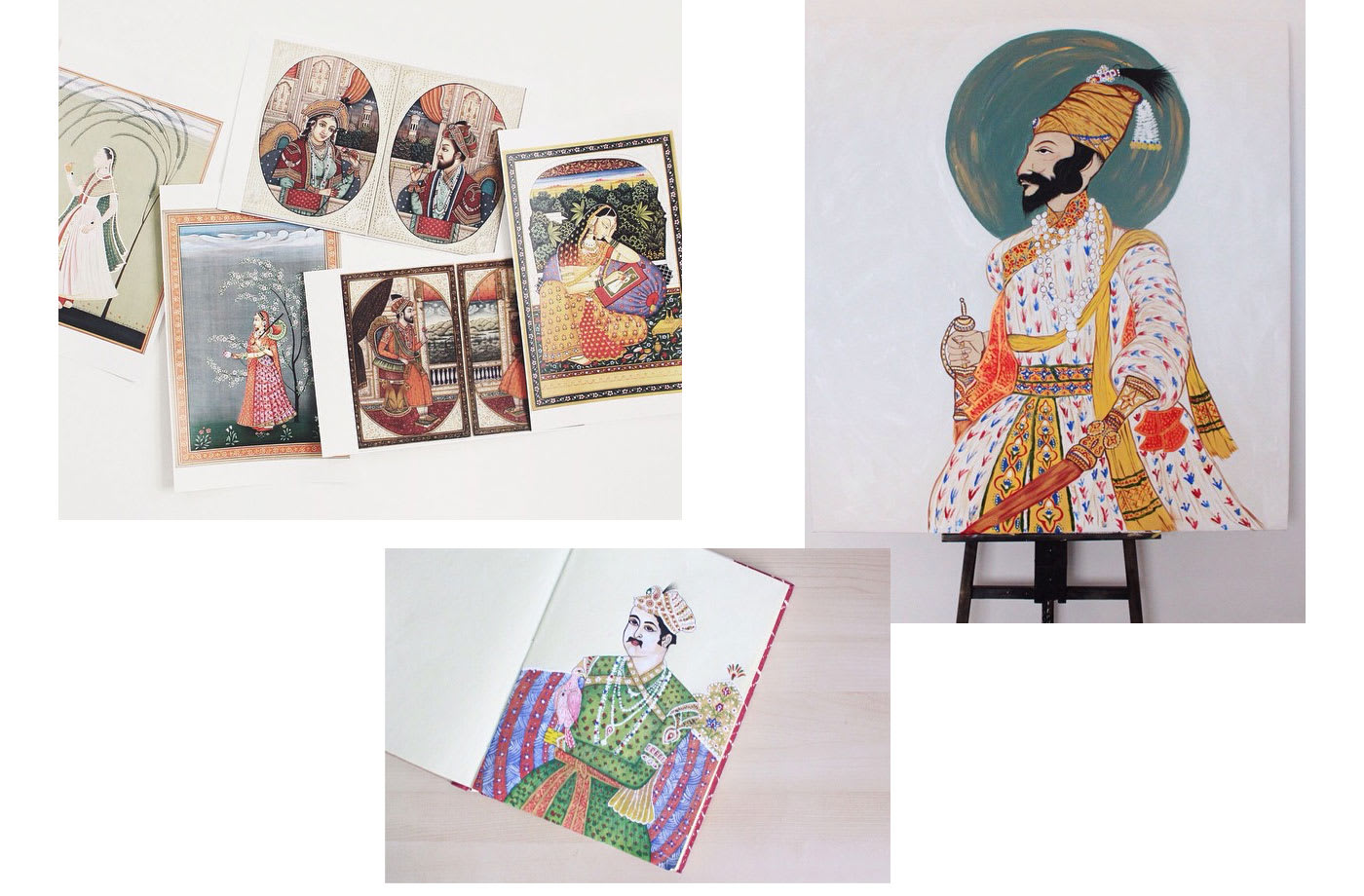
The accidental feminist
Combining street art and hip-hop with the Indian colloquialisms she grew up hearing (cue: her famous series, ‘Bakwaas’, which means ‘rubbish’ in Hindi) allowed Lakhesar to hit home with her metier. It was her collaboration with pop artist and illustrator Maria Qamar of Hatecopy that further sealed her popularity. ‘It was called “Bad Beti”’, she remembers, ‘a satirical take on society’s expectations from Indian daughters. We did not expect it to go viral. Nor did I set out to be the voice of the millennials. But the themes struck a chord.’ It also saw her feted as a modern-day feminist, but as the artist is keen to point out: ‘I am all for equality and empowerment, but really my work is just inspired by my life. It came from being a brown woman who never really related to a piece in an art gallery.’
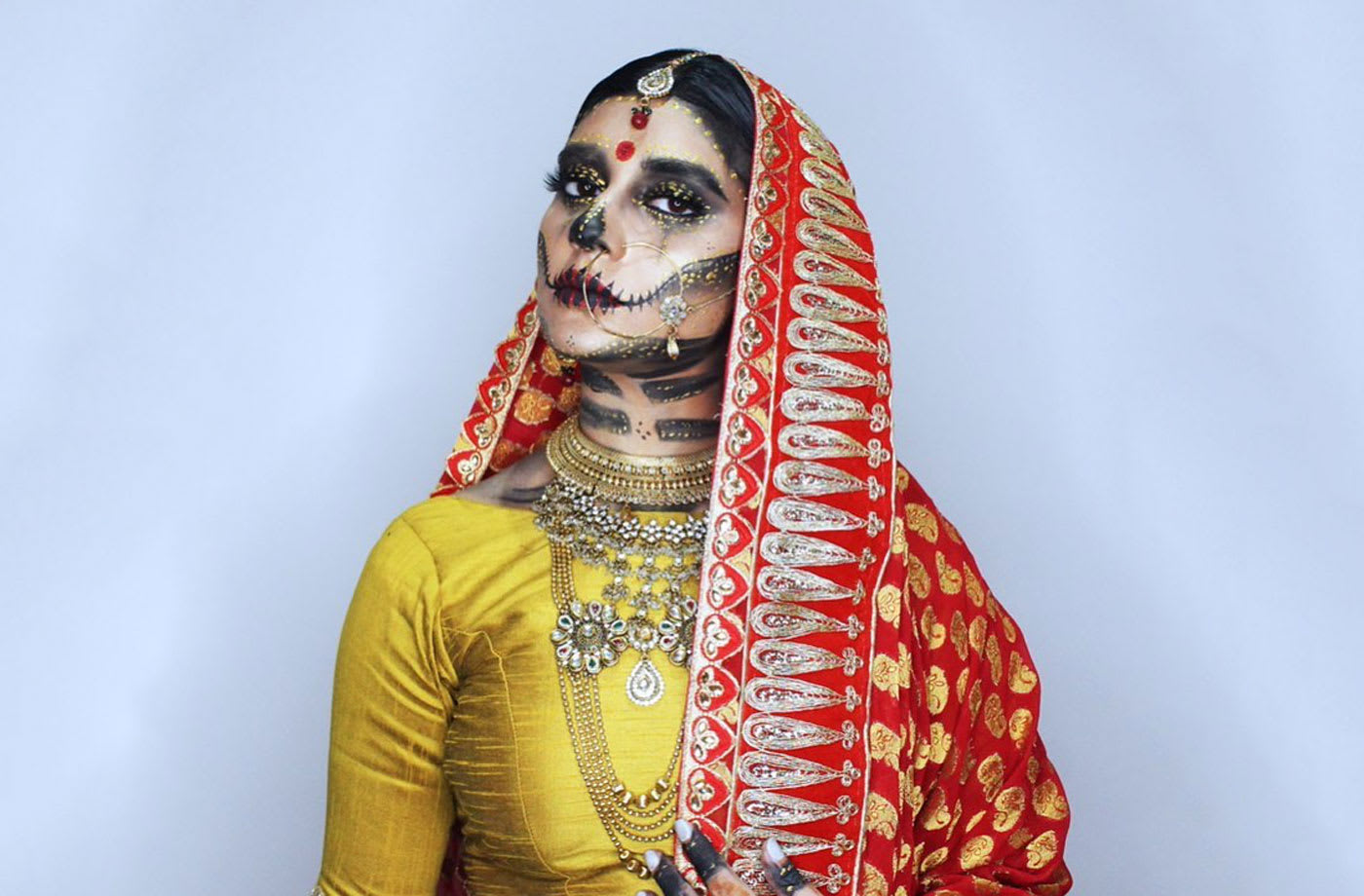
The power of two
Instagram has helped to orchestrate some career-shaping collaborations for Lakhesar, such as her recent association with one of Bollywood’s most famous stylists, Rhea Kapoor. ‘We had been following each other on social media, and when I was in Mumbai last year, she asked me to paint her lehenga,’ says Lakhesar. The outfit was designed by celebrated Indian couturier Anamika Khanna, and the overwhelming response prompted the trio to create a limited edition collection. A line of painted denim separates with New Dehli–based designer Kanika Goyal followed, as well as an event with Diesel in Mumbai.
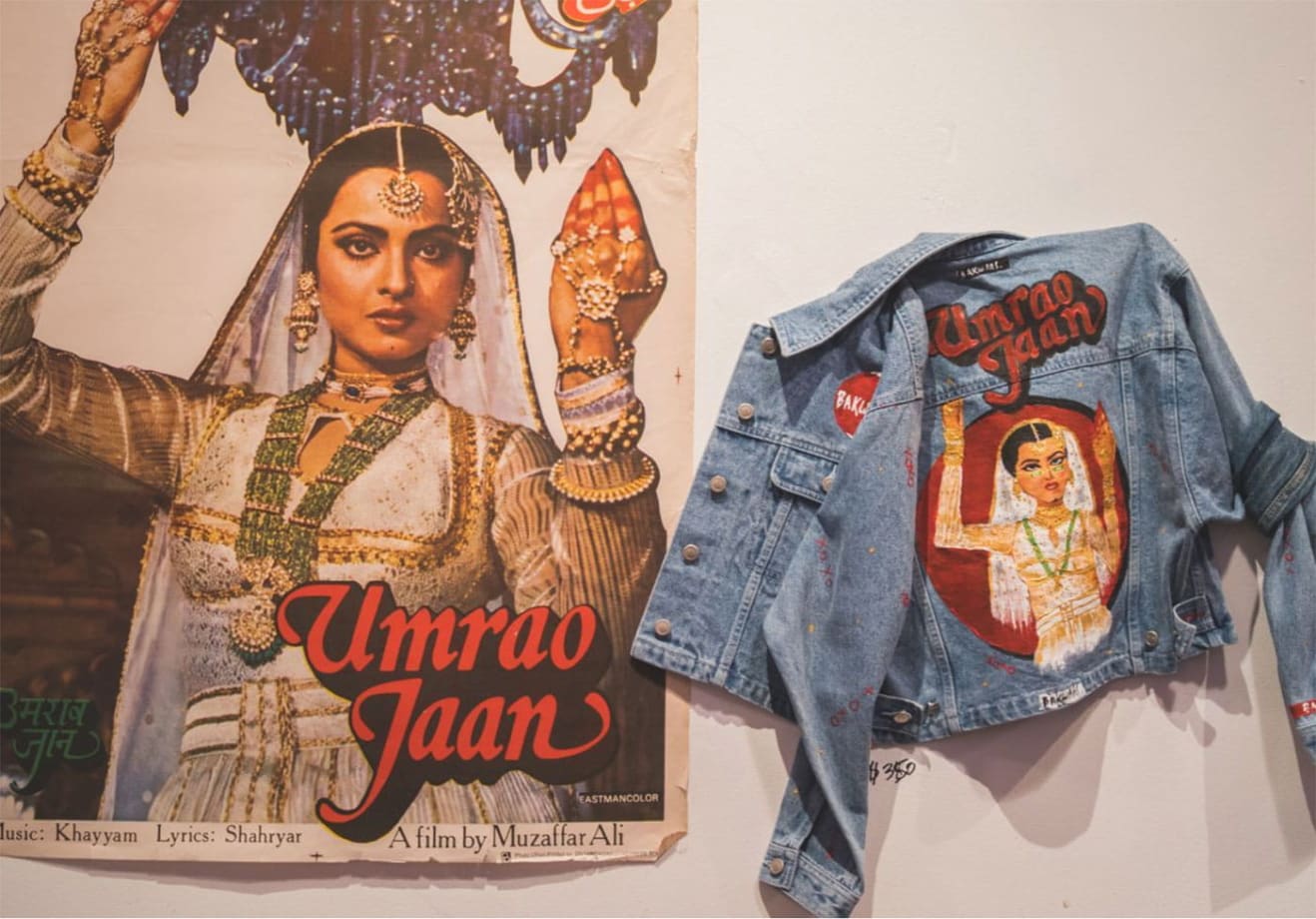
The way forward: all roads do lead back to India
Lakhesar’s adolescent years were mostly spent between Toronto, New York and Los Angeles. It was when she branched out to London that India became more accessible. Her first trip to the motherland in 2016 was prompted by a breakup, but it was mostly out of a desire to spend time in the place that inspired her work. ‘I spent four months travelling around Rajasthan, New Delhi, Varanasi, Punjab and Goa and met really cool people from the art fraternity.’ She now returns to Mumbai every few months for work and friends but mostly, as she confesses, for the pav bhaji from Shiv Sagar.
Find Babbu The Painter’s mural on the beach-facing side of Soho House Mumbai. Follow her on Instagram here and visit her e-shop.
You can book your stay at Soho House Mumbai with your special members’ rate here.